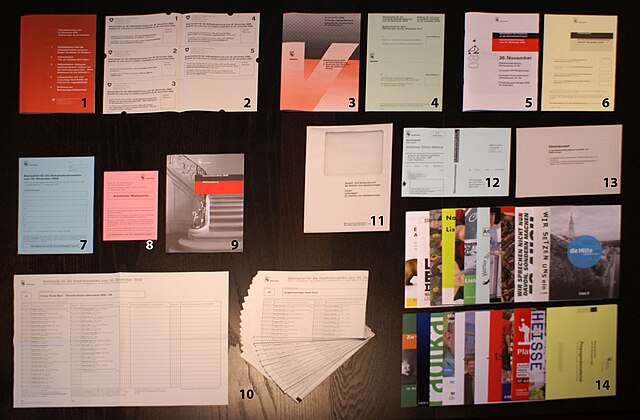Voting methods in deliberative assemblies
Deliberative assemblies – bodies that use parliamentary procedure to arrive at decisions – use several methods of voting on motions. The regular methods of voting in such bodies are a voice vote, a rising vote, and a show of hands. Additional forms of voting include a recorded vote and balloting.
The U.S. House of Representatives taking a roll-call vote to elect its speaker for the 112th Congress, as broadcast by C-SPAN.
The Wisconsin State Assembly chamber, with the electronic vote board on the wall. In 1917, the Wisconsin State Assembly became the first state legislative chamber to adopt an electronic voting system.
The House of Lords votes on the Parliament Act 1911
Voting is a method by which a group, such as a meeting or an electorate, convenes together for the purpose of making a collective decision or expressing an opinion usually following discussions, debates or election campaigns. Democracies elect holders of high office by voting. Residents of a jurisdiction represented by an elected official are called "constituents", and the constituents who choose to cast a ballot for their chosen candidate are called "voters." There are different systems for collecting votes, but while many of the systems used in decision-making can also be used as electoral systems, any which cater to proportional representation can only be used in elections.

In Switzerland, without the need to register, every citizen receives at home the ballot papers and information brochure for each voting (and can send it by post). Switzerland has a direct democracy system and votes (and elections) are organized about four times a year; here, to Berne's citizens in November 2008 about 5 national, 2 cantonal, 4 municipal referendums, and 2 elections (government and parliament of the City of Berne) to take care of at the same time.
Young woman's first vote. Cooktown, Australia.
Ballot letters in Israel
Image: Papeletareferendum 2006







